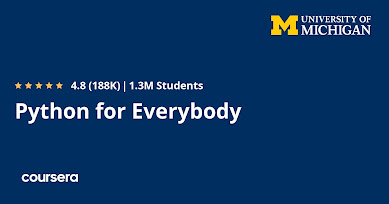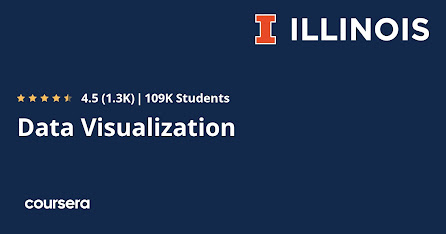The 2025 Data Analyst RoadMap
All companies have data about their customers to improve their service and get valuable insight and a much better understanding of the customer's behavior. This can be done by hiring data analysts in your company to leverage the benefits of this hug customers' data.
In order to become a Data Analyst you need to learn programming first, having knowledge of Computer Science, particularly Database and SQL also helps.
This article will try to help you understand the roadmap of being a data analyst and show you the resources you need to become a data analyst.
All companies have data about their customers to improve their service and get valuable insight and a much better understanding of the customer's behavior. This can be done by hiring data analysts in your company to leverage the benefits of this hug customers' data.
Here is the 2025 Data Analyst RoadMap, you can follow these to learn all the essential Data Analyst skills and become a successful Data Analyst in 2025.
I have tried hard to keep this Roadmap as simple as possible and only included the essential skills, tools, and frameworks but if you have any other tool or skill which should be in this Data Analyst RoadMap then feel free to suggest on comments.
Now, let's drill down important things from this Data Analyst Roadmap and see useful resource to learn them:
1. Learn Python Language
It would be best if you started your journey in data analysis by learning python language since most of the data analysts' jobs require you to have the skills in writing python codes.
Also, most of the data analysis & visualization packages support python language. Another good side of taking a course in Python is that it is easy to learn, and it has a massive community to find the solution for any problem you may face during your career.
Since Python has a vast community, there is no doubt that the internet is full of python courses in YouTube videos, blog posts, paid courses, and more. Still, I will recommend this python specialization from Coursera, which you can take to be an intermediate user of Python in just two to three months:
1.1. Python For Everybody
You won't regret starting your career taking this course on python language from Michigan university offered through Coursera. You will learn first the basics of Python, such as data structure, variables, loops, and more.
Then you will use Python to access the web and interact with the database with this language and more.
Mastering this language as a data analyst means you've completed a long journey to become a data analyst, but there are many things you should learn to be just an entry-level in this field.
2. Data Processing & Visualization
You can say that if you don't know data visualization or are not good enough in this field, you are not a data analyst because your job involves analyzing data and getting insight from this data. You can't achieve that anyway, but data visualization takes the raw data and converts it into plots to better understand your data.
There are a lot of data visualization & processing libraries that you need to learn to become a data analyst, and every tool has its advantage over the other one, so it will be better to know as much as you can. Here are a few of them:
2.1. Numpy: You need to start your journey with this library designed to work with arrays and perform mathematical calculations. It is fast and widely used among data analysts.
2.2. Pandas: If you want to import the data or change something in it, you probably need to use pandas that are designed to analyze & clean the data.
2.3. Matplotlib: You can say that matplotlib is the famous and most used data visualization library among data analysts since it is open-source, offers endless plots to create, and has a huge community to support you if you didn't find the solution for your visualization problem.
2.4. Seaborn: Another great data visualization library famous for customizing its plots and offering endless kinds of plots, and it is straightforward to learn.
2.5. Tableau: You can use this software to visualize your data without the need to learn any programming language. Just import your data, start visualization, and customize your plots.
3. Learn Statistics
You can also say that if you don't have statistics skills in your belt, you are missing a big chance to be hired by the employee. You can't underestimate the power of learning statistics since you deal with extensive data. You need to extract more profound insights into your data, make decisions based on this data, and make predictions.
3.1. Introduction to Statistics
This is a great course offered by Stanford University through the Coursera platform for learning the basics of statistics as a beginner. You will understand how to perform exploratory data analysis understand the principles of sampling, probability, sampling distributions, regressions, and more.
4. SQL and Database Knowledge
Proficiency in SQL is a fundamental skill that every data analyst should cultivate to excel in their role. SQL, or Structured Query Language, is the standard language for managing and manipulating relational databases. It enables data analysts to extract meaningful insights by querying databases efficiently.5. Machine Learning Basics
Understanding the basics of machine learning (ML) is increasingly crucial for data analysts as it opens new avenues for extracting deeper insights and predictions from data. Machine learning involves the development of algorithms that enable systems to learn patterns and make predictions without being explicitly programmed.6. Excel and Spreadsheets
Mastering Excel and spreadsheets is a foundational skill that is indispensable for data analysts, contributing significantly to their ability to manage, analyze, and visualize data efficiently. Excel provides a user-friendly interface for data manipulation, offering a plethora of functions, formulas, and tools that allow analysts to clean, transform, and derive insights from data sets.For those seeking to enhance their Excel skills, I recommend the course "Microsoft Excel - Excel from Beginner to Advanced" on Udemy, instructed by Kyle Pew. This course covers Excel essentials for beginners and progresses to advanced features, providing hands-on exercises and real-world examples to reinforce learning.
7. Business Intelligence Tools
Learning Business Intelligence (BI) tools is imperative for data analysts as these tools play a pivotal role in transforming raw data into actionable insights and supporting informed decision-making within organizations.8. Data Cleaning and Preprocessing
Mastering data cleaning and preprocessing is an essential skill for data analysts, forming the foundation for accurate and reliable data analysis. Data collected from various sources often requires cleaning to address missing values, outliers, and inconsistencies.Conclusion
In conclusion, the 2025 Data Analyst Roadmap serves as a comprehensive guide for individuals navigating the dynamic landscape of data analysis. As we stand on the brink of a data-driven era, this roadmap provides a strategic learning path that encompasses foundational concepts, advanced techniques, and emerging trends.From mastering statistical analysis to delving into machine learning and staying informed about the latest tools and technologies, the roadmap is designed to empower data analysts at all levels.
Whether you are a novice seeking to enter the field or an experienced professional looking to stay ahead, the roadmap offers a structured journey to unlock the full potential of data analysis in the years to come.
Thanks for reading! This was the most uncomplicated roadmap for data analysts to start. You can also learn many other languages used for this field, such as R language and many python packages for data visualization such as Plotly & Folium.
Other useful Data Analysis and Visualization resources
- 8 Best Data Visualization Tools for Data Analysts
- Top 5 Data Science and Machine Learning courses
- 10 Free Data Science Courses for Beginners
- 5 Free courses to learn R Programming for Machine learning
- 5 Free courses to learn Python in 2025
- 10 Best Courses to learn R Programming
- 7 Best Artificial Intelligence Courses for Beginners
- My Favorite Courses to learn Computer Vision
- 10 Essential tools for Data Science Beginners
- 10 Free Machine Learning Courses for Beginners
- Top 5 Programming Language for Data Science
- 10 Best Machine Learning Courses to Join in 2025




do we really need testing /robot framework in the path to being a data analyst? Please could you elaborate on this path of the roadmap
ReplyDeleteIt actually not essential but good to learn as Robot framework is really great integration framework for end-to-end testing. It also allows for declarative testing but you can skip that if you are just starting.
ReplyDelete